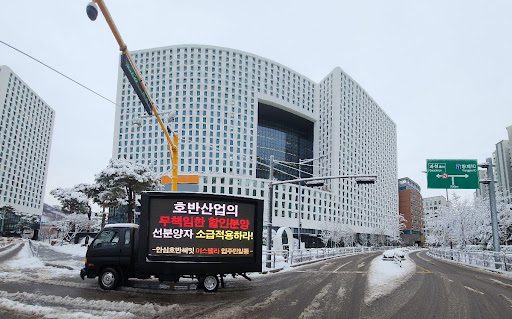🎧 Listen to This Article
South Korea’s construction sector is facing its most severe downturn in over a decade, prompting urgent calls for government intervention to prevent further economic fallout.
From January to April 2025, key indicators of housing supply construction permits, housing starts, and completions plummeted by 12%, 34%, and 10%, respectively, compared to last year. Industry experts warn that these steep declines signal a deepening housing shortage that began in 2023 and is now accelerating at an alarming rate.
“We are witnessing a collapse in new housing supply unlike anything since the global financial crisis,” said an industry analyst. “The implications for both housing affordability and economic growth are profound.”
In 2023 and 2024, housing permits remained at 430,000 units, the lowest level since the 1997 Asian financial crisis. Starts fell to just 250,000 units in 2023 and 310,000 in 2024, barely enough to sustain future demand. In Seoul, only 24,000 new apartments are expected to be supplied next year, half of this year’s already insufficient figure.
The construction crisis is having widespread ripple effects. Over 100 construction companies closed during the first two months of 2025 alone, citing unsold inventory and mounting financial strain. Over 20,000 completed apartments remain unsold outside the capital, particularly in regional markets.
Presidential candidates from across the political spectrum have acknowledged the scale of the crisis:
- Lee Jae-myung (Democratic Party) proposes raising floor-area ratios and easing restrictions on luxury housing.
- Kim Moon-soo (People Power Party) wants to abolish the redevelopment excess profit recovery system.
- Lee Jun-seok (Reform Party) advocates for compact, affordable units and increased development zones.
Despite these proposals, none of the candidates have offered detailed, actionable plans to address the scale of the crisis. Political caution appears to be limiting bold action, stemming from the Moon administration’s housing policy failures and the Yoon government’s missed goal of 2.5 million new units.
The economic stakes are high. The construction sector represents 15% of South Korea’s GDP and supports over two million jobs. Its slowdown is a key factor in the Bank of Korea’s revised 2025 growth forecast, slashed to just 0.8%.
“Construction drives multiple industries, such as steel, cement, logistics, design, and even food services,” said an economic policy advisor. “A collapse here isn’t just a real estate issue. It’s a national economic emergency.”
The next administration faces a delicate balancing act: reviving construction without fueling another housing bubble. Analysts say a clear, coordinated, and timely policy is needed to stabilize supply while ensuring long-term affordability.
“This is not the time for political hesitancy,” said the advisor. “Strategic planning and immediate execution are essential to avoid prolonged economic pain.”
As the housing sector teeters, South Korea’s question is not whether to act but how quickly and decisively action can be taken.
For further details, clarification, contributions, or any concerns regarding this article, please contact us at editorial@tax.news. We value your feedback and are committed to providing accurate and timely information. Please note that our privacy policy will handle all inquiries.



